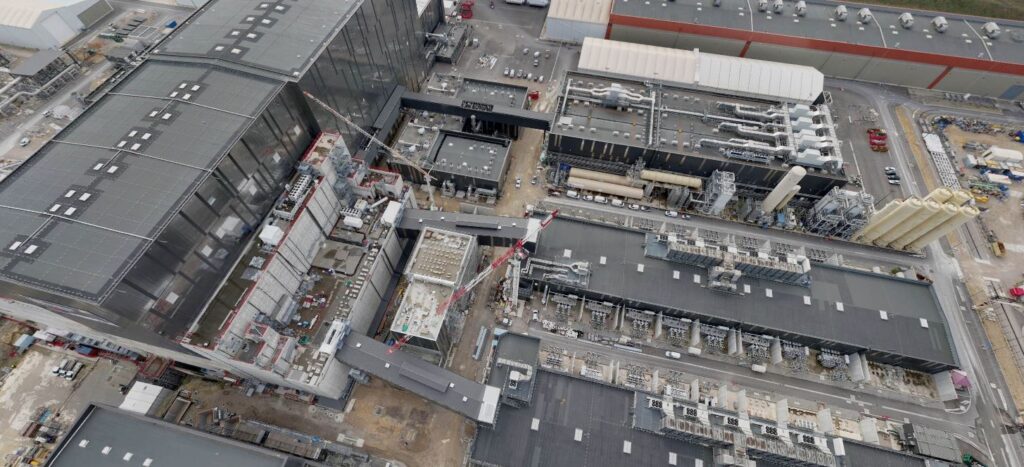The ITER Fast Discharge building is completed

View of the Fast Discharge and Switching Network Resistor Building, with the Cryobridge running over it and the Tokamak Complex towering in the background. June 2025. ©F4E
ITER’s 42-hectare platform will comprise 39 buildings and facilities. Amongst them, the Tokamak Complex stands as the central and tallest structure, where the world’s largest fusion reactor is being assembled. Surrounding this landmark, European teams are steadily erecting auxiliary facilities, necessary for the successful operation of the experiment.
Their latest milestone is the completion of the Fast Discharge and Switching Network Resistor Building. Since 2019, Fusion for Energy (F4E) worked with the French firm Demathieu Bard to detail the design and construct it, based on the preliminary design by the Engage consortium, acting as the architect-engineer. The project came to a close this week, as the teams signed the hand-over to ITER Organization.
The facility will house fast discharge resistors, designed to protect ITER’s magnets in case of a sudden loss of superconductivity. In this event, known as quench, a special system would cut off the coils from the power supply to avoid their overheating. The large energy load would be immediately deviated to the resistors and dissipated as heat through exhaust ducts.
This vital function places the components under strict French nuclear safety regulations. As such, the building itself had to meet reinforced structural standards. “We applied design solutions such as a robust concrete structure to ensure extra strength and stability for the enclosure protecting important components, all while staying within cost and schedule,” explains Eric Brault, Project Manager for F4E.

Besides, the building is specially equipped to cope with the instant heat release. The teams installed powerful ventilation systems to cool the space down rapidly, part of the building services put in place during the last year of works.
Located between the Tokamak Complex and the Cryoplant, and with the cryobridge running over it, one of the challenges to construct the Fast Discharge Building was co-activity. This means it took a great deal of coordination and careful planning to orchestrate all works in a busy area. “Thanks to the close collaboration with F4E and ITER Organization, we managed to progress in parallel in an agile and safe manner and deliver in time,” said Sébastien Berne, Nuclear Activities Director of Demathieu Bard.
In fact, further along the same boulevard, F4E and Demathieu Bard completed another structure just a few weeks before: the busbar bridges. These 50-metre-long bridges will support the conducting bars that deliver power to ITER’s magnets. Their construction began in 2023 and, despite more co-activity constraints, the teams lifted and assembled it in record time. “We made it thanks to a very detailed staged plan and the support of all teams, including subcontractors like Blocotelha, in charge of cladding, or Bouygues, for electrical services,” summarised Eric Brault.
